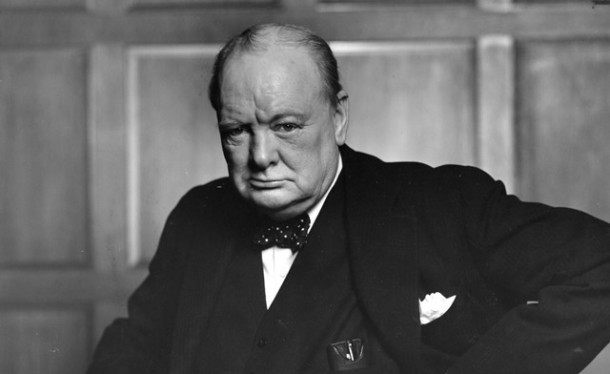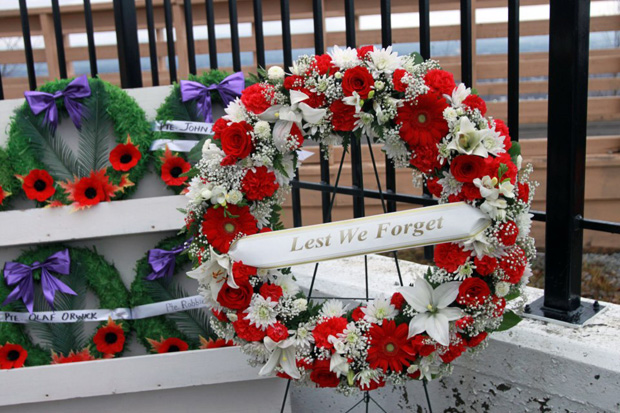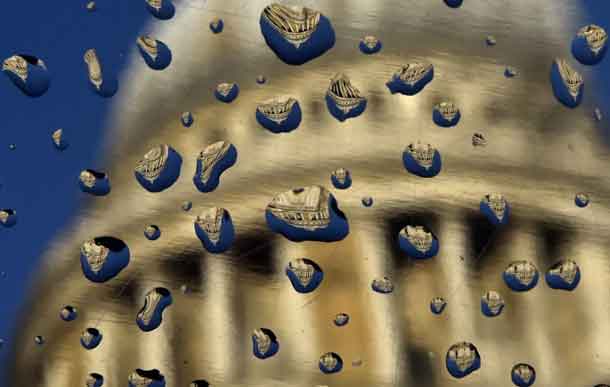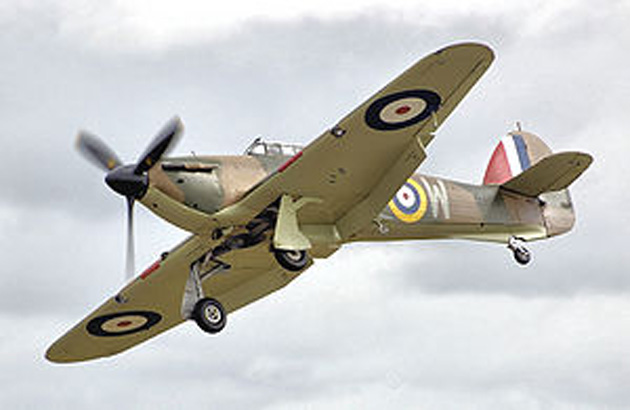
THUNDER BAY – LIVING – If words engraved through time come to symbolize remarkable events in history. Surely Winston Churchill’s heartfelt description of the endurance of the Allied cause during the Battle of Britain merits repeating this week.
Churchill, as warlord of England’s Resistance, understood the intangibles of a stiff upper lip that persisted on and on. Even as the disasters of war brought on by enemy drove on and on.
Where Britain’s physical and mental psyche were being rattled, brutally impacted, while suffering weekly shell shocks with bombs raining down from the sky above their homeland.
Churchill truly evolved into the legendary leader whose face became a portrait of a stubborn English bulldog caricature.
As Elie Wiesel a concentration camp survivor would write about the legacy of words, “There were times a dictionary offers only elusive, and meagre, tools to express tipping point moments in human survival.”
Churchill was laconic when he praised the strength of England’s backbone and resistance overcoming the mayhem, and gut ranching explosions, above London as “Their finest hour.”
Churchill would, through his religious dedication to fine rhetoric, personify the English language as only Shakespeare had before him. On the shelves in any library discovering a hundred books on Churchill there will be at least two hundred on Shakespeare. Though what comes fully forward studying Churchill is he was never satisfied being a framed photograph on a wall. In contrast to the dynasty of British royalty.
Churchill became such pro active, and inspirational, voice throughout the ramifications of Germany’s premeditated blitzkrieg (lightning attack) that began during July of 1940. When Hitler’s air force called the Luftwaffe combined with Nazi bombers exploded from the clouds planning to conquer Britain. The air attack was in advance of a planned amphibian landfall to follow being called, in coded messages, Sea Lion.
The Luftwaffe’s mission was bent on driving sunlight out of British lives. Leaving them in disarray, in miserable shadows in the aftermath of the Luftwaffe’s assumed superiority as sky pilots.
Oh, how this would change. Be reversed.
Become written in the military history that was to alter forever the plight of England, and the fortune of her allies, recovering time and time again.
Finding, always, way to rebound from the adversity they were dealt.
Take a moment and glance at the journal of a young English pilot. And note how flying pilots were called airmen. And, typically addressed in W.B. Yeats poem: An Irish Airman…foresees his battle.
The twenty-one-year old British airman who rendered here is John Beard. He, like a generation of English of his time, kept a persistent diary of what an inferno existed in the sky. Beard wrote, “Minutes would go by as we flew upwards to be prepared. Green fields beneath. As I scanned the sky for the first glimpse of them.”
He would continue to describe how things raced on. “When a new vector came through on the radio telephone we swung round with the sun behind us. There they were. First they seemed just a cloud of light as the sun caught parts of the glistening chromium from their engines. Then the details stood out. I could see the noses of the Messerschmitt fighters. The sky seemed full of them. Thousands of feet up along our horizon.”
Beard’s air strikes went like this. “When we made our hits a red glow would erupt. Then short tongues of flames came right out of the fuselage. They would spin and sink down blanketed by smoke.”
Once after a lengthy day of dog fighting above, Beard entered a kind of poetic l’envoi. Almost a temporary heavenly truce in his diary. On this occasion after a heady battle Beard made a deke away from two opponents as an exhausting, baffling day was ending.
“My fuel running low. They must have drained their fuel tanks too, for they turned for home.
I set the front nose of my craft down and did likewise.”
Besides there were superlative numbers of ingenious pilots from other countries like Canada, leading the way with 24, and others from New Zealand, Australia, and even some remarkable air men from Poland. Together they discovered an unrelenting moxie. It forged a collective assembly with a resolve that was keeping up a constant vigilance by day and night.
A tactical defence crucial to repelling an opponent obsessed with trying to dominate.
Another English airman, in his nineties, reflected only a few years ago. Tom Neil recounted, “I was involved with different flights. In shooting down a Dornier 17 Bomber. But as I was shooting all the chaps bailed out. I was so close I thought they might hit my plane. Later we learnt one of the four actually survived in a plunge into the Thames.”
But the relentless pace, and the urgency to maintain through it all, and not sag or become weary must have been such a psychological key to overcome. It truly centred on the overall youthfulness of their makeup. Sustaining their zest through one of the greatest ongoing episodes of aerial carnage ever.
With merciless daily explosions, scores of fatal impacts battering and blistering the heart of England, in London, and so many other points on British maps.
Neil went on, “We did actually nothing but take off in our planes. Shoot at the enemy. Land. Sleep. Then, take off again.”
An athlete in his day Tom Neil compared it to his favourite sport. “It was to experience a very, tough, and rigorous, rugby match. Though the penalty –should it be –assessed was death. Whereas in rugby you would probably just break a leg or crack a collarbone.”
A particularly touching scene amid the rubble heaped up by German bombings, over the three months and three weeks that accumulated into the days of the Battle of Britain, was told to me by a University Theatre Arts professor.
It seems a young actor called Michael Caine was quietly stepping through the blasted brick, fractured glass, and woodwork where he grew up in the East end of London. By chance he met, and would forever remember, an actor known to many. It was Charlie Chaplin. Caine sketched the aching response Chaplin had looking at the destruction. The littered chaos.
Caine said, “The old Tramp could hardly speak at first. But kept pointing to a place. A spot. Then, Chaplin wept.” What was not there had been levelled in a blitz. It was an original theatre Chaplin originally performed in auditioning his talents in live theatre.
The two men—as brotherhood to be, in citing–stood for a time in silence. Later stepping away from merely one example of the thousands upon thousands of hammer-in-tongs sagas within this commonwealth of England. Such were the tearful sites the British would eventually rebuild when; at long last inside this critical time in World War Two, a cease-fire was reached.
Reading the volumes of literature chronicling these events, and the fortitude of Britain, throughout months, which, must have felt like living in Dante’s narrative known as the Inferno.
What surfaced time after time bears witness to resilience almost beyond the nightmarish dreams that begat England’s introductory chapters to this. Becoming one of the most strategic, and wilfully affirmative, eras of resistance ever revealed. Anywhere, in any wartime effort at salvation.
So much wrath pounding down daily on them, all Britain could reflect as her peopled stared up into the sky was intolerance. A resolve to not crumble as nation under siege.
Where the final critical, and marvellous, moments weaving in and out of Britain’s final path to liberation were forged in another insightful speech by Winston Spencer Churchill.
Churchill was resolute, verging on magnificent, in reconnoitring what took place. “Never have so many. Owed so much. To so few.”
Churchill was measuring the ultimate sacrifice Allied airmen had engineered re-affirming his island Nation’s superhuman aggregate when confronted by a tyrant of such diabolical proportions.
A moment spent respecting the anniversary, and the redeeming legacy of the Battle of Britain, with a silent nod with a short prayer would seem obviously fitting.
Somewhere in the events of our day. This day.
Ronn Hartviksen



